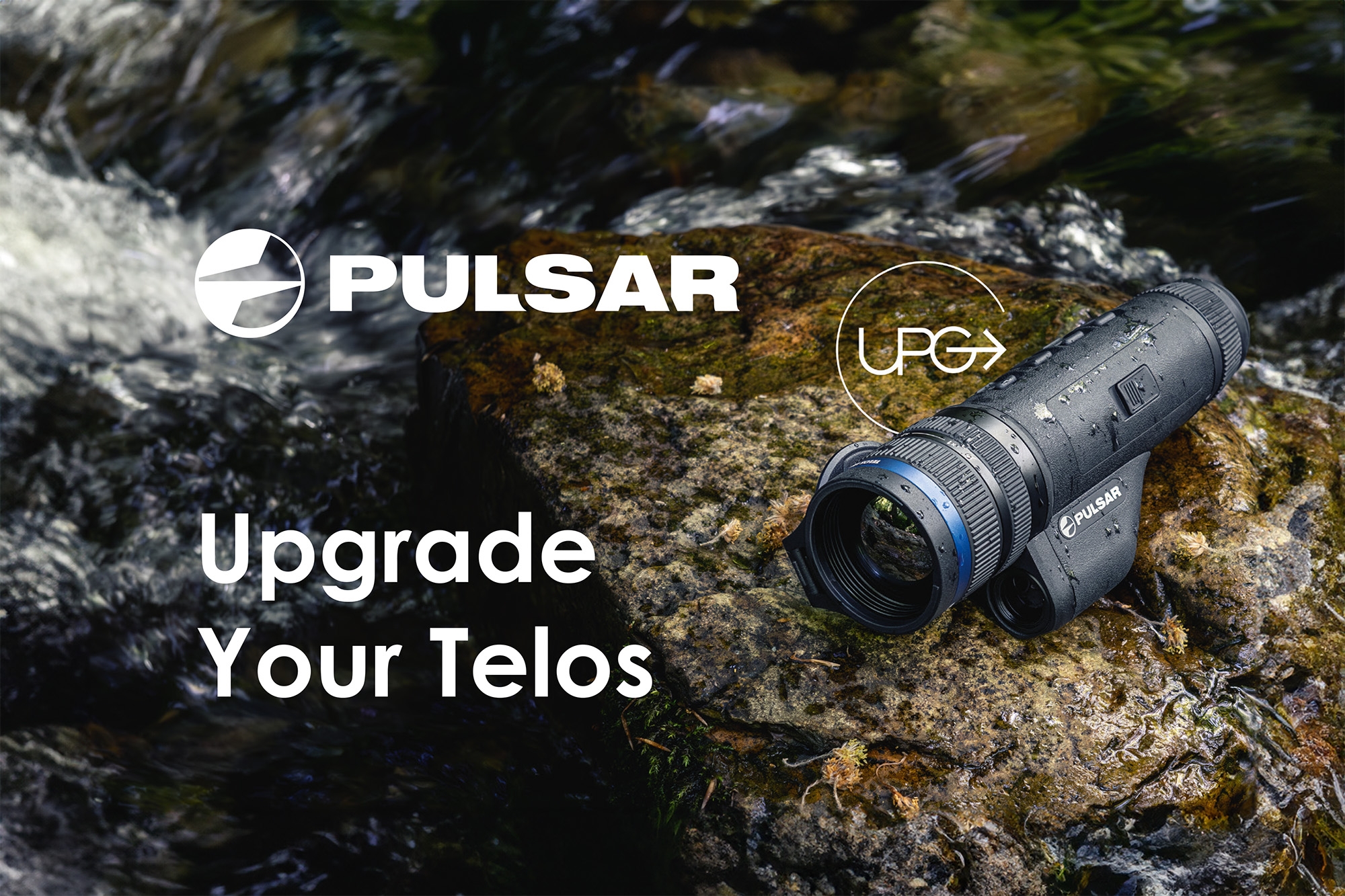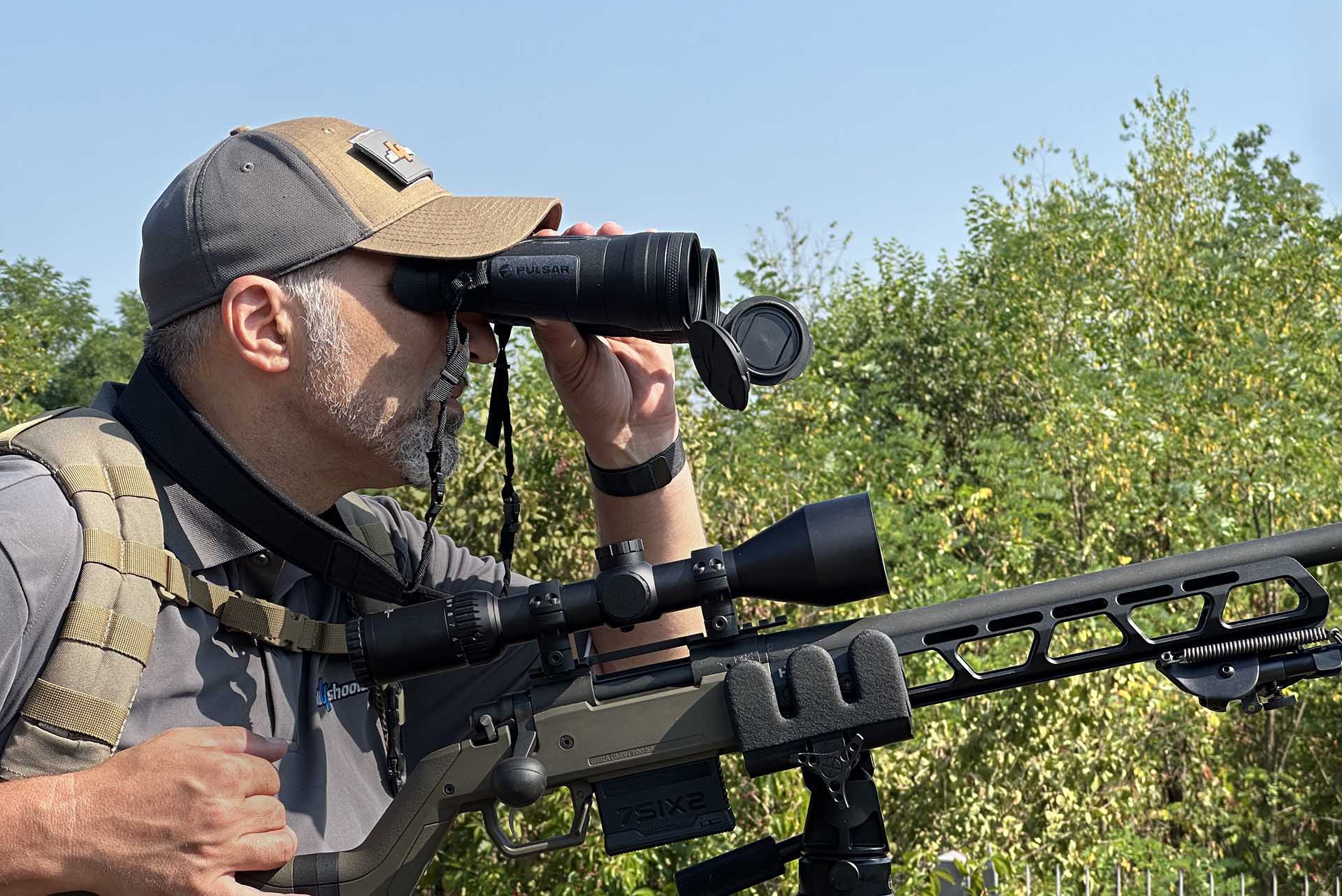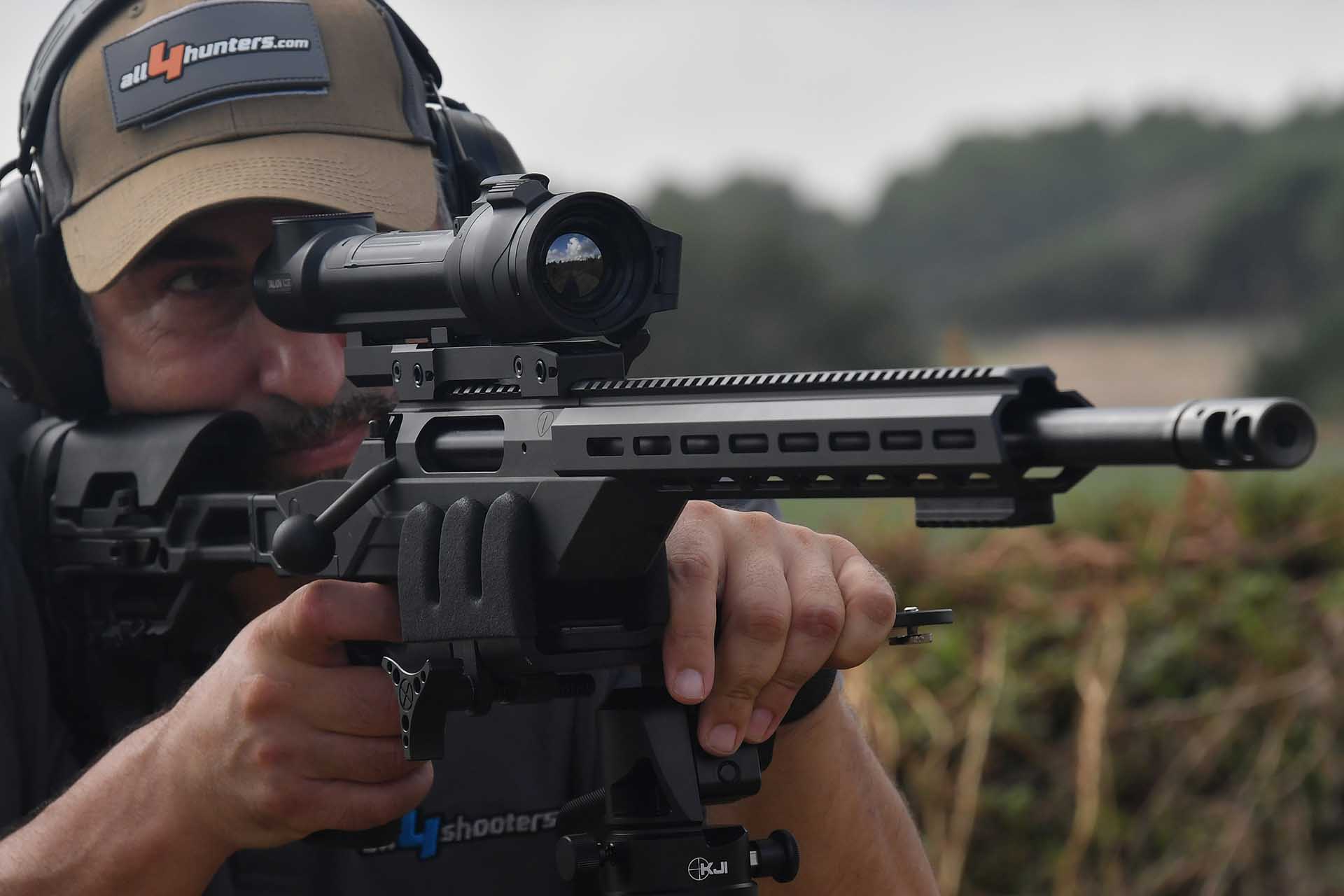We had the privilege of testing all previous iterations of the Accolade thermal imaging binoculars from Pulsar, from the entry level Accolade XQ38 to the laser range finder equipped, top of the line XP50 model. All have performed admirably, addressing the needs of a very broad base of users, although the primary destination is without a doubt the hunting segment.

Today, we have in our hands the highest performing thermal binoculars ever built by Pulsar, the second-generation Accolade 2 XP50 LRF. It is the highest performing Pulsar binoculars ever due to the implementation of a brand new thermal imaging engine featuring a groundbreaking, state of the art 640x480 resolution uncooled Focal Planar Array (FPA) microbolometer sensor with 17µm pixel pitch, boasting an unprecedented NETD sensibility better than 40 milli Kelvin (mK). This sensor is being used in all of Pulsar’s flagship products, including the Trail 2 LRF XP50 riflescope, the Helion 2 XP50 hand held monocular and the Accolade 2 LRF XP50 we’re testing today.
NETD – acronym for Noise Equivalent Temperature Difference – is essentially the ability of the sensor to detect a temperature difference; the smaller the NETD, expressed in thousandths of a Kelvin (the basic unit of temperature, equal in magnitude to the Celsius degree, but starting from absolute zero), the better the performance, and sensibility, of the sensor itself.
A small note on NETD
It must be noted that the sensibility of the sensor is affected by the NETD value but is not the thermal imaging system capability itself. What this means is that a 40mK sensor is not able to measure temperature differences of 0.004 °C of the target, it means that the sensor is measuring a difference of 0.004 K on its focal plane. One Kelvin is the same magnitude of one Celsius degree, difference being the Kelvin is an absolute value. A temperature of 1 °C of the target, roughly translates to a difference of 0.03 K on the FPA of the sensor of a well-built Thermal Imaging device. A 40mK rated sensor is therefore able to measure temperature differences of slightly more than 0.1 Celsius – and that is amazing for a mainstream, semi consumer (or “prosumer”) product like the Pulsar Accolade 2 XP50 LRF thermal binoculars.
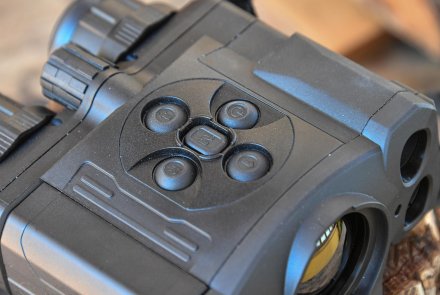
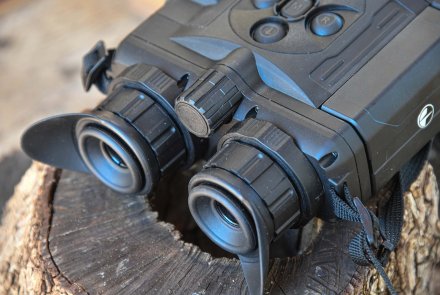
Features of the Pulsar Accolade 2 XP50 LRF
The second generation of the XP50 LRF Accolade thermal binoculars retains the same overall design, configuration, and user interface of the previous top-of-the-line model. The 50mm focal length, fast 1:1.2 Germanium front objective lens that offers a 2.5x native magnification has not changed, and the engine processor can reach a maximum magnification of 20x, thanks to the 8x magnification ratio digital zoom. The integrated laser range finder is capable to measure distances up to 1000 meters / 1095 yards, and its operation is literally a single button – two presses away, with the measured distance reading directly in the eyepiece display. As the functionality and performance of the LRF module in the Accolade 2 has not changed, together with many of the basic features of the binocular (such as internal video recording, Streamvision smartphone App and WIFI connectivity, internal menu system and options…) we suggest our readers to take a peek over our previous test of the XP50 LRF Accolade here.
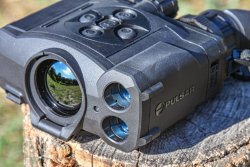
What has changed is the addition of a new high quality, full-color Super AMOLED microdisplay in the eyepiece, featuring a 1:1 resolution of 640x480 pixels with the sensor. The new display is also completely freeze proof, and the device is able to operate at extreme temperatures and ambient conditions, with temperatures ranging from -25 to +50 °C, and the device is IPX7 rated (meaning perfect functionality after 30 minutes immersion at 1m depth water).
The thermal engine has also been improved with new software, including the picture-enhancing Image Boost algorithm, yielding a clearer, more detailed image with increased contrast and sharpness without losing shading richness and smoothness.
In our test, the laser rangefinder performed to our expectations, measuring objects with reasonable speed. The five button interface is easy to learn and use, although some functions are deep nested in the menu. Eyepieces are easily adjusted for diopters and interpupillary distance, and focusing is accurate although the small focus knob may feel just a bit sluggish.
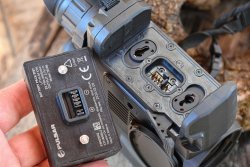
Image in any condition is glorious, and the Image Boost functionality is impressive, especially increasing magnification. The new Super AMOLED display is very sharp and especially using the native 2.5x resolution, the quality of the observed image is superb. We greatly prefer a 1:1 resolution ratio (display resolution the same as the sensor resolution) to avoid prescaling and dithering artefacts, even when experience and know-how of manufacturers manage to achieve excellent results.
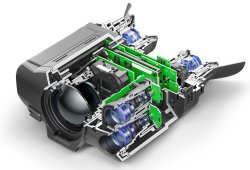
The improved performance of the 40mK sensor is remarkable, it may not seem so even having the two generations Accolade devices side by side in normal daytime observation, but it becomes immediately perceivable in field situations where there is very little temperature difference, for example after a constant rain drizzle, which drenches everything and uniforms the temperature. In this case, instead of a barely recognizable sea of grey, with the occasional flash of light due to wildlife heat signatures, we are able to see through the eyepiece and discern a much better description of the same environment in which said wildlife is moving. Hard conditions for any thermal imager include cold, winter mornings, snow, sleet and rainfall, fog, and any situation in which thermal contrast is low.
The new sensor also enables the Pulsar Accolade 2 XP50 LRF thermal binoculars to detect 1.8 m tall standard targets up to 1800 m in total darkness.
We are therefore quite impressed with the new Pulsar Accolade 2 XP50 LRF thermal binoculars, in which all of the improvements are, as the saying goes, “under the hood”; a real advancement, and performance increase. Plus, this increase of performance comes with an actual drop in MRSP price, which is always good! If you are on the market for a high performance thermal binocular, and can afford the quite hefty price tag of 4690 euro, go for it: you will not be disappointed.
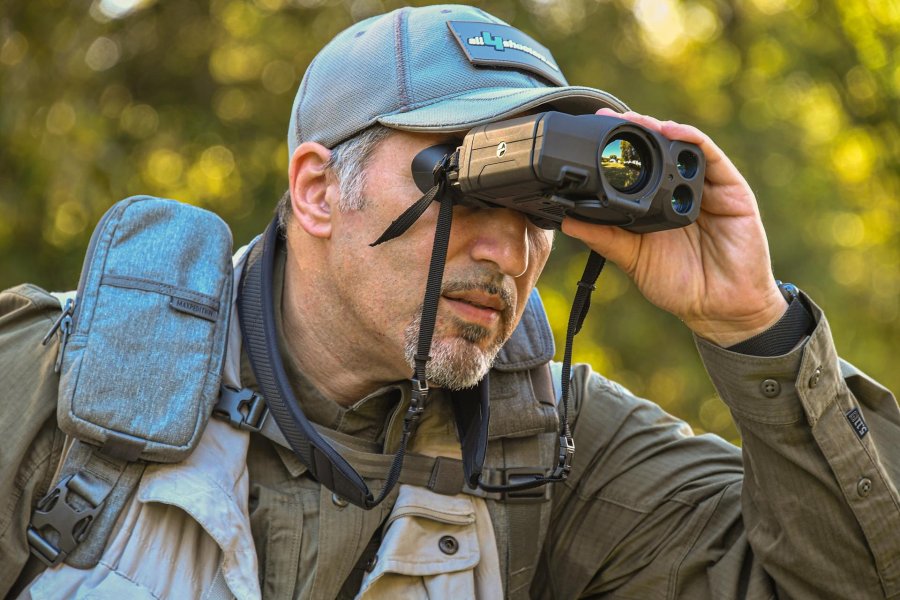
Pulsar Accolade 2 XP50 LRF: tehcnical data
| Manufacturer: | Pulsar - Yukon Advanced
Optics (www.pulsar-nv.com) |
| Model: | Accolade 2 XP50 LRF |
| Type: | Binocular thermal vision
device |
| Magnification: | 2.5x native, 8x digital
zoom (up to 20x magnification) |
| Objective: | 50mm/F1,2 with coated
germanium elements |
| Sensor: | 640x480 pixel uncooled Amorphous
Silicon microbolometer FPA sensor with 17 μm pixel pitch, with automatic and
manual calibration |
| IR sensibility: | LWIR (from 7.7 to 13.2 um),
NETD better than 40mK |
| Eyepiece(s): | SuperAMOLED color
Microdisplay with 640x480 pixel resolution, ± 5 diopter adjustment, 5 mm exit
pupil, 16 mm eye relief, interpupillary distance adjustment 56-71 mm |
| Features: | Max. observation range of a
180 x 50 cm rectangular heated object in optimal conditions: 1800 m (lights a
pixel at this distance); focusing range, 3 m – infinity |
| Rangedfinder: | 1000m measuring range, ± 1m
accuracy, 905nm laser (IEC safety class 1) |
| Dimensions: | 164x130x64 mm |
| Weight: | 700 g without battery |
| Materials/Finishes: | Made entirely of composite
glass fiber reinforced technopolymers on an alloy metal frame |
| Notes: | Powered by Pulsar B-Pack
Li-Ion IPS 5/10 batteries, built-in DVR recorder (16GB internal memory), WIFI
Stream Vision connectivity, compatible with Android and IOS
smartphones/tablets, MicroUSB socket, IPX7 waterproof certified |
| Price: | MRSP 4690 euro (price in
your region has to be requested to your local distributor) |
For more informaton please visit the Pulsar website.





